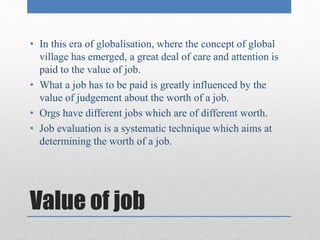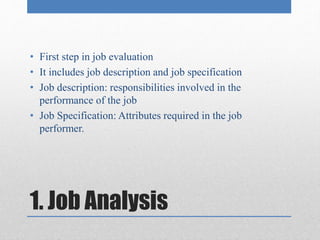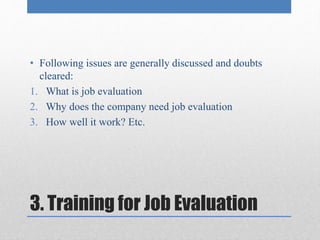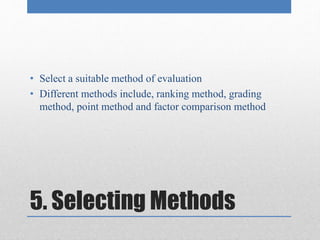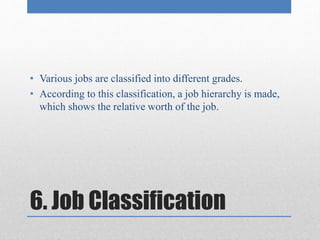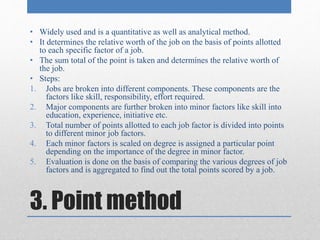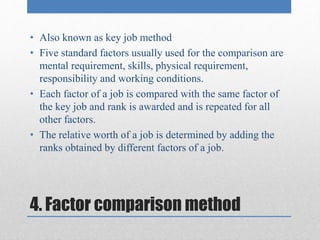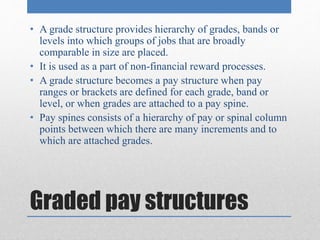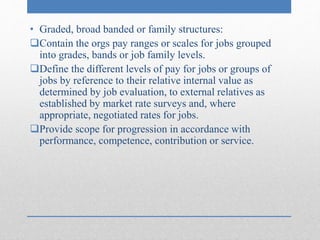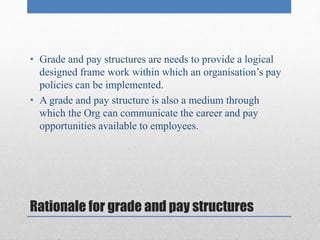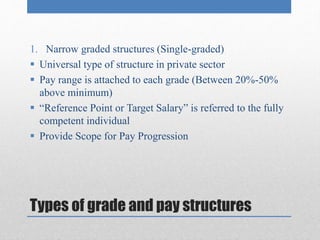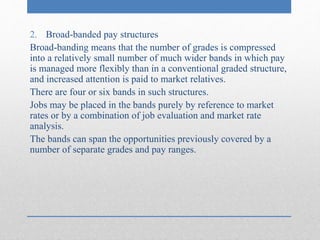This document discusses job evaluation, pay structures, and rewards. It defines job evaluation as assessing the relative worth of jobs to determine fair pay structures. The key points are:
1. Job evaluation involves analyzing each job, developing job descriptions, selecting an evaluation method, classifying jobs by grade, and maintaining the system. Common methods are ranking, grading, point, and factor comparison.
2. Pay structures provide a framework for managing pay scales and ranges attached to job grades/levels based on job evaluation and market rates. Structures can be narrow graded, broad banded, career families, or job families.
3. Performance management is often linked to pay through contingent pay, bonuses, or performance-related

